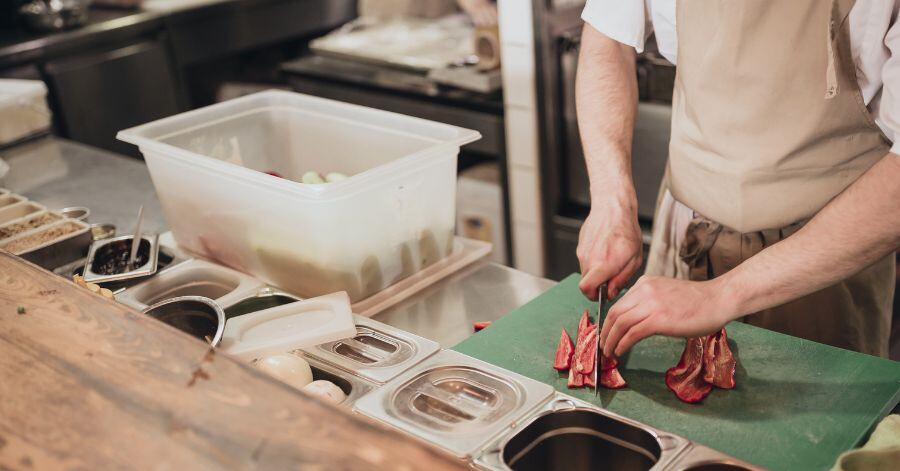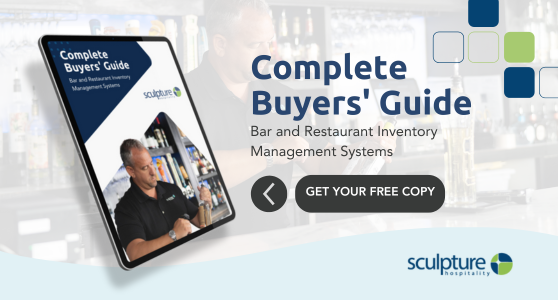Ever feel like running your restaurant is a high-wire balancing act? Well, you’re not wrong. On one side you’re juggling food quality, customer experience and labour costs; on the other, you’ve got one of the biggest hidden expenses… waste.
If you’re not actively managing your restaurant’s waste, you’re essentially throwing money in the trash (quite literally).
Food waste alone costs the restaurant industry billions of dollars each year. According to Recycle Track Systems, the restaurant industry spends an estimated $162 billion every year in costs related to wasted food.
And that’s not even considering the environmental impact, which is a growing concern among customers and regulators alike. This isn’t restaurant industry specific but, according to the US Environmental Protection Agency (EPA), food accounts for 24% of solid waste to US landfills, which are the third largest source of human-related methane emissions in the United States.
Sustainable practices aren’t just about “going green” anymore, they’re about running a more efficient, profitable business.
Beyond cost savings, proper waste management can elevate your brand’s reputation. Customers are becoming more eco-conscious, and many prefer dining at establishments that take sustainability seriously. Not to mention, in many regions, legal and regulatory requirements mandate responsible waste disposal, so staying ahead of the game isn’t just smart; it’s necessary.
So, how can you turn waste management from a liability into an opportunity? Let’s break it down, starting with understanding the different types of restaurant waste.
Understanding the Different Types of Restaurant Waste
When it comes to your restaurant, not all waste is the same. Some types of waste are more expensive, while others are worse for the environment. To effectively manage it, you first need to recognize the various types of waste your restaurant produces.
Food Waste: This is the biggest culprit - spoilage, over-prepping, plate waste, and unsold inventory. Whether it’s expired ingredients or oversized portions that customers can’t finish, food waste is a costly issue.
Packaging Waste: From cardboard boxes to plastic wrap and styrofoam containers, packaging waste piles up fast. While some of it is recyclable, much of it ends up in landfills if not properly managed.
Hazardous Waste: Cooking oil, cleaning chemicals, and broken lightbulbs all fall into this category. Mishandling these materials can be a health hazard and may result in fines from regulatory bodies.
Operational Waste: Think disposable napkins, broken plates, outdated equipment, and single-use cutlery. This type of waste often flies under the radar but contributes significantly to your overall footprint.
The Financial and Environmental Benefits of Waste Reduction
A solid waste management plan isn’t just good for the planet, it’s good for business. Reducing food waste leads to significant cost savings. When you buy ingredients that go unused, it’s essentially the same as just throwing money away.
By optimizing inventory management and portion control, restaurants can dramatically cut down on unnecessary purchases and disposal fees.
Beyond cost savings, waste reduction improves the sustainability of your business. A restaurant that generates less waste has a lower carbon footprint, which is increasingly important to customers who prioritize eco-friendly businesses. Customers notice when a restaurant makes sustainability a priority, and many actively choose to support businesses that align with their values.
Additionally, implementing sustainable waste practices enhances a restaurant’s reputation. More diners today look for establishments that minimize environmental impact, and restaurants that take waste reduction seriously can use it as a unique selling point. Showing that you care about sustainability can boost brand loyalty and even attract new customers.
In fact, The National Restaurant Association’s State of the Industry 2023 report showed nearly 75% of US adults indicated they would likely visit a restaurant that employs sustainable and eco-friendly business practices.
With that in mind, let’s dive into the best practices to help you take control of your restaurant’s waste.
Waste Management Best Practices to Implement in Your Restaurant
1. Conduct a Waste AuditBefore you can fix waste problems, you need to understand them. Conducting a waste audit allows you to assess current waste levels and pinpoint the biggest sources of waste in your restaurant.
Start by tracking what is being thrown away and separating waste into categories like food, packaging, and operational waste. This data will help you identify wasteful practices and make informed decisions about portion sizes, ordering, and menu adjustments.
2. Reduce Food Waste Through Proper Inventory ManagementA well-organized inventory system is key to preventing spoilage and reducing overordering. Implementing the FIFO (First In, First Out) method ensures that older ingredients are used before newer ones, reducing the likelihood of food expiring before it’s used.
A modern inventory management system can further help by giving you the control and visibility over your inventory that you need to make better decisions. When you understand how inventory comes in and out of your restaurant, you can make data-driven decisions that improve profit margins and reduce waste.
Interested in learning more about choosing the right inventory management system? Download our Complete Buyer’s Guide to Inventory Systems for expert insights!
3. Optimize Portion Control
Overserving is a major contributor to food waste in restaurants. Standardized recipes and portion guidelines help ensure consistency and prevent oversized portions that customers can’t finish.
Training staff on proper portioning techniques, along with using measuring tools like scoops and portion scales, can significantly cut down on plate waste. Regularly reviewing customer feedback and analyzing which dishes frequently leave leftovers can also help adjust portion sizes accordingly.
4. Improve Food Storage PracticesIf you want to extend ingredient shelf life and prevent unnecessary waste, proper food storage techniques are key. Consider tactics such as clear labelling and organized storage bings to help track inventory and maintain correct temperatures to reduce spoilage.
Vacuum sealing and freezing ingredients can also help preserve freshness, especially for perishable items. Additionally, avoiding cross-contamination and storing food at the proper humidity and temperature levels will ensure that ingredients stay usable for longer.
5. Repurpose and Reuse IngredientsInstead of throwing away food scraps, consider creative ways to repurpose them. Vegetable peels and bones can be used to make flavourful stocks and broths, while stale bread can be transformed into croutons or breadcrumbs. You can even upcycle food waste into new menu items, such as using vegetable trimmings in soups or making jams from overripe fruit.
Additionally, donating surplus food to local food banks or shelters is a great way to minimize waste while giving back to the community - it doesn’t help your profit margins directly but it allows you to give back to your community and increase the sustainability of your business.
6. Implement a Composting ProgramComposting is an excellent way to manage organic waste sustainably. Setting up a composting station in your restaurant allows food scraps to be turned into nutrient-rich soil instead of ending up in a landfill. Partnering with local composting services makes the process easier, and educating staff on what can and cannot be composted ensures that the system runs smoothly.
7. Recycling and Waste SeparationRecycling should be a core part of any waste management strategy. Start by establishing designated recycling stations for glass, plastics, and cardboard throughout your restaurant to make it easy for staff to properly dispose of materials.
Partnering with local recycling programs can further streamline the process and ensure that recyclable waste is handled correctly. Last but not least, regular staff training on proper recycling practices also helps reinforce these efforts.
8. Reduce Single-Use PlasticsEliminating single-use plastics is a simple yet impactful way to reduce waste. Switch to compostable or reusable takeout containers, and offer incentives for customers who bring their own cups or food containers. Opt for sustainable alternatives like paper or bamboo straws instead of plastic ones, and choose eco-friendly to-go packaging that aligns with your restaurant’s sustainability goals.
9. Work With Suppliers to Minimize WasteYour suppliers play a crucial role in your restaurant’s waste footprint. Choose vendors that prioritize minimal and sustainable packaging. Ordering in bulk can also help reduce excess packaging waste. Using suppliers that use returnable crates and containers instead of disposable packaging further minimizes unnecessary waste.
10. Monitor and Reduce Energy and Water WasteWaste management isn’t just about food, it’s also about conserving resources. You can do this by upgrading to energy-efficient appliances that use less electricity and installing water-saving fixtures in kitchens and restrooms. Training staff on responsible energy and water usage, such as turning off equipment when not in use and fixing leaks promptly, can lead to significant cost savings while reducing your environmental impact.
11. Train Staff and Create a Waste-Conscious CultureYour waste reduction efforts will only be successful if your team is on board. It’s critical to provide ongoing training on waste management best practices and set clear waste reduction goals. Recognizing and rewarding staff for waste-saving initiatives can motivate them to participate actively. The most successful businesses are those that encourage employees to share ideas on how to further improve waste management, fostering a culture of sustainability within their restaurant.
Running a restaurant is tough, but waste management doesn’t have to be. By implementing these best practices, you can save money, reduce environmental impact, and enhance your restaurant’s reputation, all while making your operations more efficient.
Need help getting control and visibility of your inventory? Sculpture Hospitality can help, and in turn, help you reduce waste. Reach out to our team today to get a free consultation.










